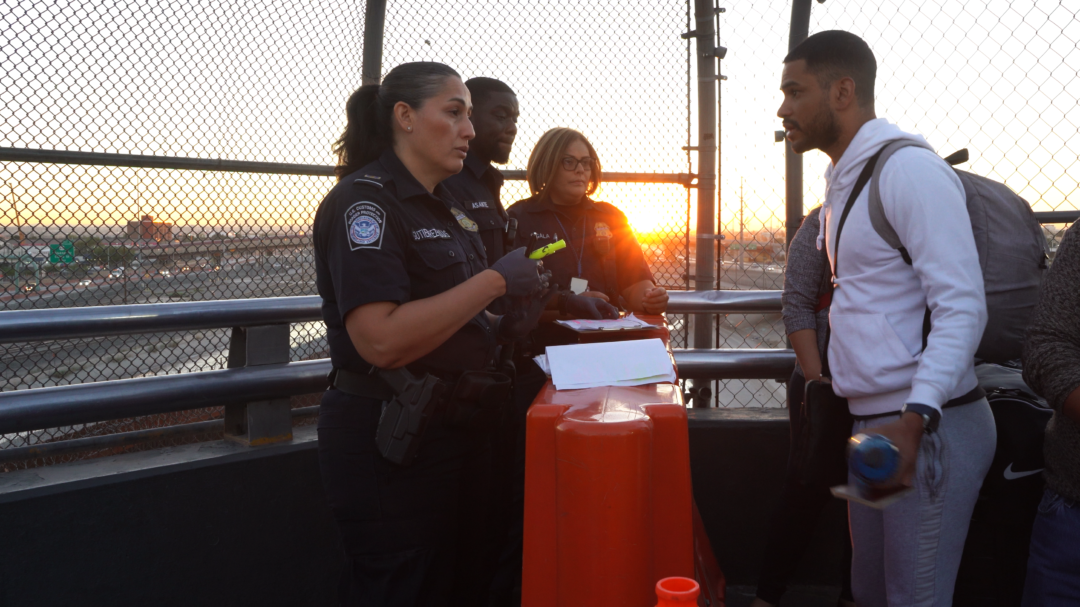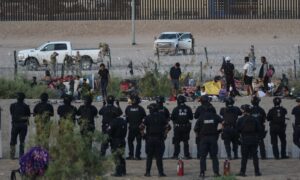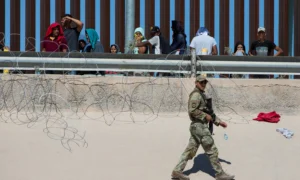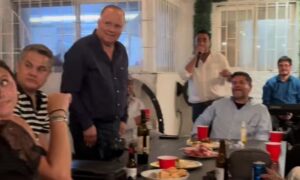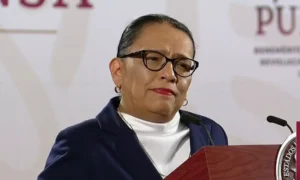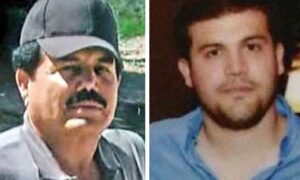By Blanca Carmona/La Verdad
Leer en español aquí
Four migrants who survived the March 27 fire at the National Migration Institute immigration shelter in Ciudad Juárez finally crossed into the United States in the early morning hours last month.
The men, who asked to be identified only by their first name and last name initials, were, Bryan Eduardo F.Q., 27, from El Salvador; Bryan Orlando R.F., 26, from Honduras; Eliseo G.V., 22, from Guatemala, and Stefan A., 31, from Venezuela.
Their desire to reach the U.S. in search of a better life never wavered.
“We always longed to enter the United States, we see it as a country of many opportunities…We see it as something we longed for and with the help of God it will be possible,” said one of the victims who survived the fire where 40 migrants died because they remained trapped inside the immigration station.
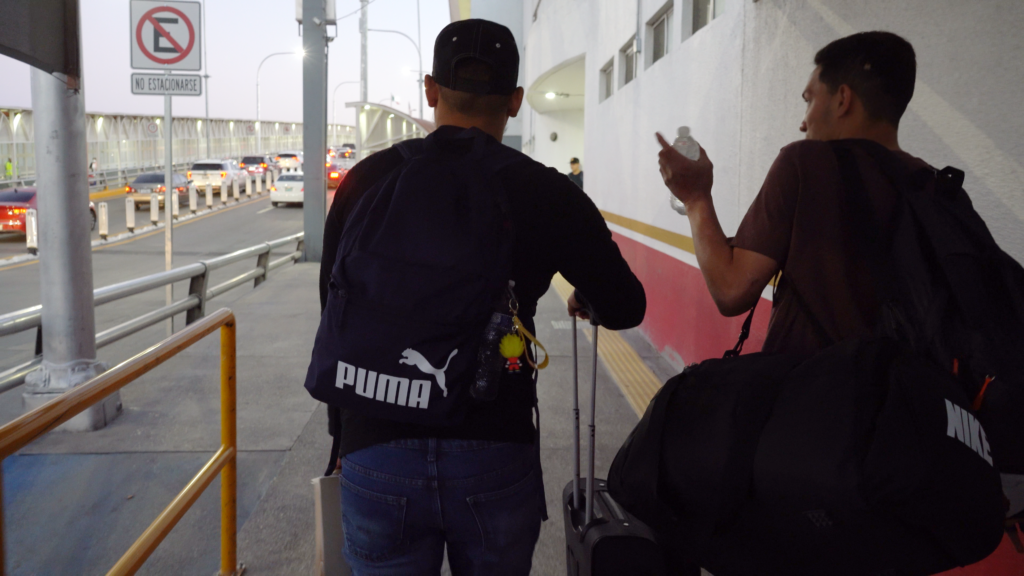
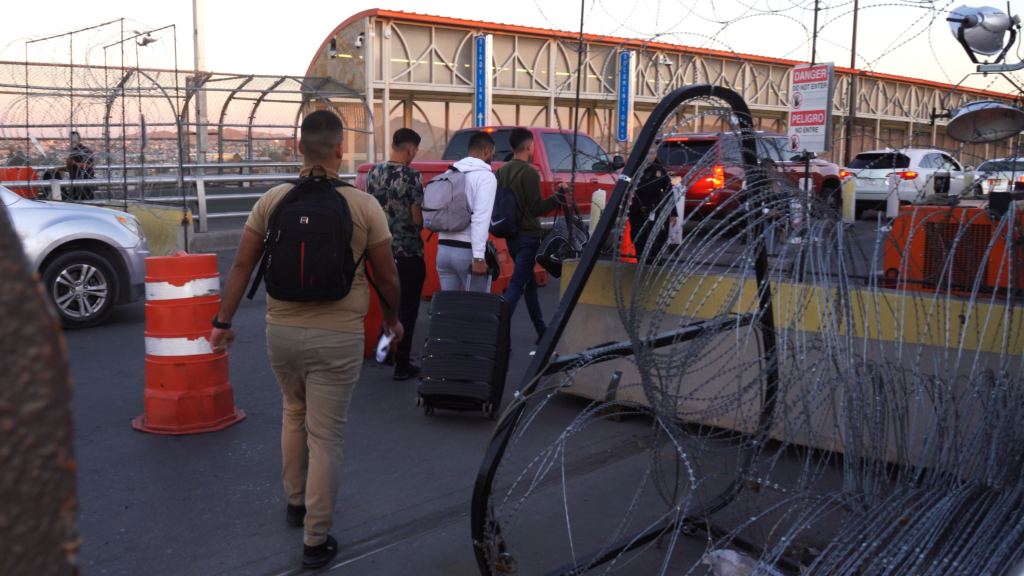
After being cleared to leave Mexico City, where they had been hospitalized since the fire, they arrived in El Paso enroute to Colorado, North Carolina, Dallas and another community in Texas on Sept. 21. They crossed into the U.S. through the Paso del Norte international bridge.
Pulling their suitcases, and assisted by personnel from the organization Comprehensive Human Rights in Action (DHIA), the four climbed to the top of the international bridge and stopped at the highest part just where the Mexican territory ends to stand in front of the U.S. Customs service officers, who were told that the men have a humanitarian permit, or a humanitarian parole which allows them to enter the country.
All four were quickly allowed to enter the United States. Other survivors had crossed the border earlier, while some still remain in Mexico.
Blanca Navarrete, director of DHIA, reported that the four and three of their relatives received parole on humanitarian grounds, that is a permit that the US government grants to people due to an emergency and an urgent humanitarian reason.
The efforts to get these men across were carried out by the Institute for Women in Migration with the support of the Las Américas organization.
“They are still under medical follow-up, in fact, they are also being admitted with medication, with their prescriptions, some of them have protection for burns, another to improve joints. It will be necessary to continue medical care in the United States,” Navarrete explained.
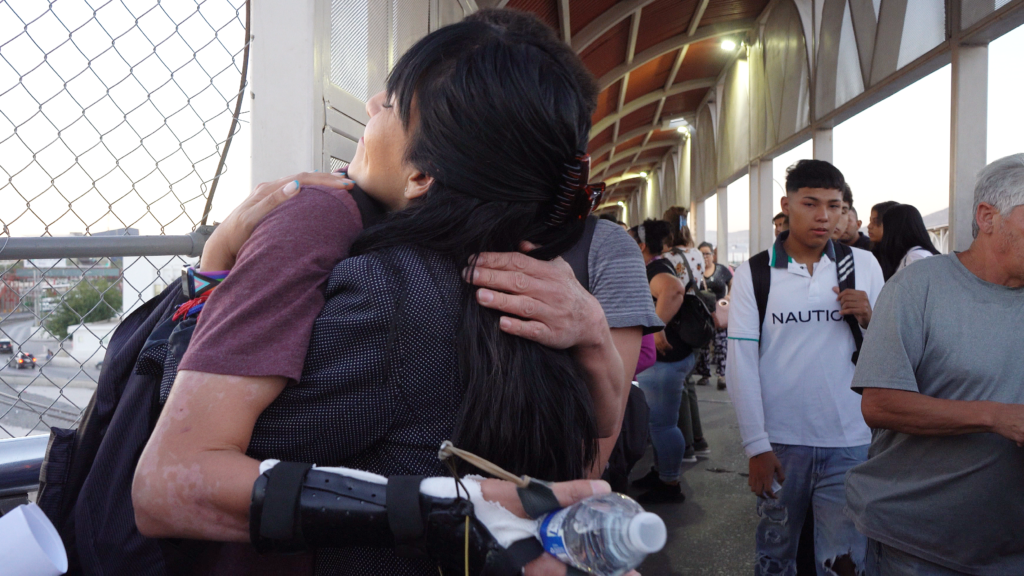
The survivors expressed mixed feelings as they left Mexico and entered the United States, something they had been seeking for months since they left their countries of origin, El Salvador, Honduras, Guatemala and Venezuela. They achieved their goal on Sept. 21, albeit with physical and psychological consequences that come from having been trapped in a fire that spread very quickly and without receiving help from those responsible for the immigration station.
Two of the survivors are worried that they may not be able to work again, due to their injuries.
After the fire, Bryan Orlando was intubated for almost two months, the last 20 days conscious, because he suffered second-degree and third-degree burns on 20 percent of his body, as well as burns in his airway.
He still has a brachial plexus disorder – an injury of the network of nerves that send signals from the spinal cord to the shoulder, arm and hand. The injury affects the mobility of his right arm and hand. He also has a cough with black phlegm from the smoke he inhaled, lack of sensitivity in some parts of the body and excess sensitivity in others.
Bryan Orlando said that due to his lack of education he has worked primarily in physical jobs, something that may no longer be possible because he is unable to move his right arm and hand.
His dream is to learn the English language, get a job and finish recovering.
Another survivor, Eliseo has burns on both hands. The most severe are on his left hand where a skin flap from another part of his body was placed to prevent it from being amputated; it was necessary to “glue” his hand to his abdomen for three weeks.
He has cuts on both legs as doctors were looking for a viable blood vessel to connect his left hand. He also suffered burns to his airway, he says, stating that he swallowed too much smoke.
In addition, he suffers from anxiety and is angered about what happened, especially because of the damage to his right hand and to cover the skin flap.
“I didn’t want to get burned, but I got burned… I didn’t want to have any damage to my body, right, but it’s unfair because I got burned,” he said. “When I fainted, I didn’t feel how I was burned. I woke up in the hospital.”
He was hospitalized for 12 days in a hospital in Ciudad Juárez and then for two and a half months in a hospital in Mexico City. He has a covering on his left hand to protect the skin flap and to cover his burns.
Eliseo fears that he will not be able to work again due to the condition of his left hand.
Survivor Bryan Eduardo was transported to Mexico City and was treated at two hospitals. He remained intubated for a month because he suffered a lung injury, airway burns and kidney damage.
“My recovery has been slow, since I had kidney damage, but it is improving. Yes, thanks to God, the tests I have been getting at the hospital have come back positive. A doctor told me that my kidneys were 90 percent cured but that if I get the flu, diarrhea or any other illness… that they should not let me take strong medications because ‘it can harm my health,’” he said.
Stefan suffered a cardiorespiratory arrest when he was going to be intubated, a pulmonary pleura was performed due to inhalation of monoxide, burns to the left ear, retinal damage to the right eye due to the fire and a blow to the head when he lost knowledge.
He developed ulcers due to lack of mobility while he was intubated.
“I was left for dead,” Stefan recalls, stating that he was already inside a thermal body bag placed on the floor of the parking lot of the immigration station, with his face covered, when a military woman noticed that he had vital signs.
He was hospitalized from March 27 to April 19, then he was released for two days before returning for six more days to the hospital for appendicitis.
The group of migrants and their families arrived in Ciudad Juárez on Sept. 19 from Mexico City where they were hospitalized. Once in Juarez they went to the immigration station that burned, located next to the Lerdo-Stanton international bridge, seeking comfort and closure for what had happened to them and the other migrants.
When they arrived at the burned immigration shelter, they say, security personnel guarding the property chased them away, telling them that nothing important happened there, just “some burns.”
(translation: El Paso Matters)


